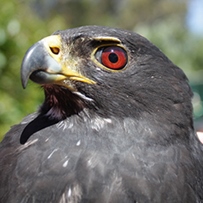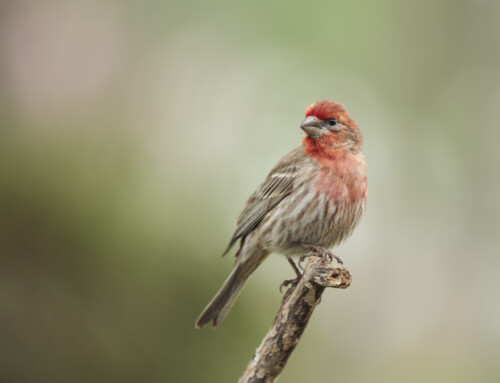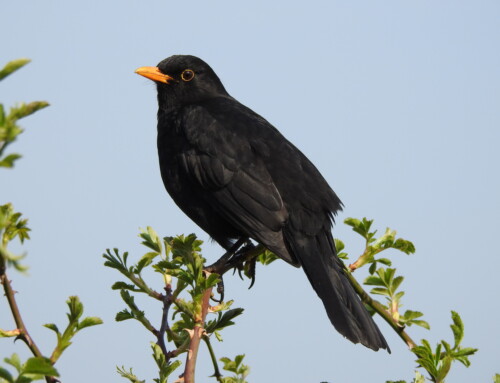
What can Cape Town’s Black Sparrowhawks tell us about city-dwelling raptors?
LINKED PAPER
Stability in prey abundance may buffer Black Sparrowhawks from potential negative health impacts of urbanisation. Suri, J., Sumasgutner, P., Hellard, E., Koeslag, A. and Amar, A. IBIS. DOI: 10.1111/ibi.12422 VIEW
As showcased at this year’s #BOU2016 conference on urban birds, the world’s cities are becoming the focus of some of the most interesting research in ecology and specifically, ornithology. As the majority of the world’s human populations now live in urban areas, the impacts of urbanisation on biodiversity continue to grow, leading to the loss of indigenous species, spread of alien invasive species, habitat loss and fragmentation, altered biogeochemical cycles and the introduction of novel threats such as traffic, noise, disease, pollution and predators like domestic pets (Grimm et al. 2008, Marzluff 2001). But it’s not all doom and gloom, and urban ecological research has offered some fascinating insights into the ways in which species and natural ecosystems can cope with human disturbance and habitat alteration. Cities have become prime examples of the emergent properties that arise in ecosystems where human infrastructure and novel biotic communities intersect.
Birds have been the best studied taxa in urban ecosystems because they are well-loved and observed, their ecology is well-understood and they are highly visible, making them relatively easy to study. Different species have varying levels of tolerance to urbanisation. Some may thrive and take advantage of human-subsidised resources whilst others disappear as a result of habitat transformation and disturbance. As such, urban birds can be split into three groups – ‘urban avoiders’, ‘urban adapters’ and ‘urban exploiters’ (Blair 1999). These categories mainly relate to a species’ occupancy of urban areas based on its resource and habitat use. However, whilst an urban-exploiting or adaptable species may be able to make use of abundant resources in the short-term, there may be other hidden costs of urban living which could undermine its long-term health and persistence in an urban environment. In other words, cities could act as ‘ecological traps’ (habitats which appear attractive but are in fact unsuitable) for these species (Sumasgutner et al. 2014).
In Cape Town, South Africa, the Black Sparrowhawk, Accipiter melanoleucus, makes a prime study subject. Like many other bird species in southern Africa (Hockey and Midgely 2009), Black Sparrowhawks have recently experienced a rapid and dramatic range expansion across the sub-region. In the 1970s, they would have been considered an extremely rare species on the Cape Peninsula, but they have since established a breeding population (Curtis 1998). Currently, almost 50 pairs are believed to be breeding on the Peninsula (Martin et al. 2014a). The spread and success of Black Sparrowhawks on the Peninsula has largely been attributed to the abundance of nesting sites in the form of alien pine and eucalypt plantations, as well as the abundance of prey (mainly pigeons and doves). So, ironically, we have non-native species to thank for the success of the sparrowhawks. (But what does this make the Black Sparrowhawk, a native invader…? I’ll leave that one open-ended!)

Although the Black Sparrowhawk appears to be thriving in Cape Town, we were interested in examining whether they might be suffering from hidden physiological consequences as a result of living in a predominantly urban area. The birds have been monitored since 2001, so we had a vast resource of long-term data to work with, particularly from chicks which have been ringed and had blood samples taken over recent years. We looked at nestling health (blood parasite infection, body condition, leucocyte ratios) because chicks are confined to the nest and are most vulnerable to any surrounding stressors. Moreover, they are totally reliant on their parents to provide them with sufficient nutrition. We predicted that nestlings in more urban territories would be exposed to greater environmental stress and disturbance, resulting in symptoms of physiological stress. We also wanted to explore the hypothesis that Black Sparrowhawks on the Cape Peninsula have benefitted from the abundance of prey, by assessing their diet composition and diet breadth along an urban gradient, as well as the abundance of key prey species in habitat types with different levels of urbanisation.
In keeping with the success of the Black Sparrowhawk in this urbanised area, we found no signs of poor health in nestlings living in more urban territories. Indeed, we actually found a tendency for the prevalence of one the blood parasites to decrease in more urban areas. Black Sparrowhawks therefore appear to be very robust to urban stressors, living in the city and avoiding many of the negative health consequences that would be expected to come with urban life. Moreover, we found that prey species were abundant in all habitats, and that there was no trend in the diet composition of more urban-dwelling sparrowhawks compared to those in less urbanised territories. This came as a bit of a surprise as we expected more urban birds to prey on more feral pigeons than more rural birds.

We hypothesised that Black Sparrowhawks are under little nutritional stress – due to the abundance of prey, but also due to the stability and reliability of this abundance across urban habitats – and that this might serve to shield them from the negative health impacts of urbanisation. If this is the case, then we might be able to say that cities have a positive effect on certain bird-eating/generalist raptors such as Black Sparrowhawks. This wouldn’t be surprising, given the number of other species that have also been seen to thrive in urban areas, such as the Mississippi Kite, Ictinia mississippiensis (Parker 1996), Merlin, Falco columbarius (Sodhi et al. 1992), Cooper’s Hawk, Accipiter cooperii (Estes and Mannan 2003), Red-tailed Hawk, Buteo jamaicensis (Stout et al. 2006), Sharp-shinned Hawk, Accipiter striatus (Coleman et al. 2002), Eurasian Kestrel, Falco tinnunculus (Sumasgutner et al. 2014) and Peregrine Falcon, Falco peregrinus (the urban raptor poster-child; Cade et al. 1996, Rejt 2001), as well as more recent urban colonists – Northern Goshawk, Accipiter gentilis (Rutz 2006), Crested Goshawk, Accipiter trivirgatus (Lin et al. 2015), Crowned Eagle, Stephanoaetus coronatus (McPherson et al. 2015, Reeves and Boshoff 2015) and Eurasian Sparrowhawk, Accipiter nisus (Rutz 2006, 2008).
Bird-eating raptors in particular experience decreased hunting success and energy returns from the time they spend foraging (Jenkins and Hockey 2001) but in urban areas, there is no shortage of hunting opportunities and a potentially higher likelihood of success, potentially freeing them from such restraints. Furthermore, in the case of the Black Sparrowhawk and other congeners with similar hunting and foraging strategies, the sheer availability of food is not the only advantage. Urban habitats may also provide ideal hunting grounds for these raptors, providing features such as edges, fence lines, perches and tree cover from which to hunt. All in all, this suggests that cities provide an ideal foraging landscape for bird-eating raptors.

This work was conducted as part of my MSc thesis, but forms a small and growing part of the work done on this population of Black Sparrowhawks at the University of Cape Town. Over the last few years, Dr. Arjun Amar and a team of researchers have been looking into other aspects of this population’s life history. This study is merely a glimpse into the peculiarities of this urban population. Past studies have found that this population exhibits unique characteristics compared to conspecifics elsewhere in the species’ range and that its range expansion into the Cape Peninsula has been accompanied by changes to its life history.
For example, Black Sparrowhawks are a polymorphic species, occurring in light and dark morphs. Whilst elsewhere in their range the light morphs are more common, on the Cape Peninsula this morph ratio is reversed and the dark morphs are more prevalent (Amar et al. 2014, Tate et al. 2016). Furthermore this population is exposed to winter rainfall (Martin et al. 2014b) and experiences two distinct peaks in its breeding season and an overall extension of the breeding period (Martin et al. 2014b). They are also capable of double brooding within one breeding season. These characteristics may illustrate the ability of Black Sparrowhawks to adapt in response to novel anthropogenic conditions, an adaptive capacity that may further explain the lack of apparent negative health impacts observed in this study at the nestling stage. Black Sparrowhawks (and other raptors like them?) may quite literally be urban adapters, whereby urban populations contain adaptations that make them more robust to novel conditions in these habitats, which present novel selective pressures. Future research will incorporate some of the unique characteristics of this population, and address differential responses of light vs. dark morph birds and early vs. late breeding birds to urbanisation, to further test whether these adaptations are beneficial in an urban context. Further research on the physiology of urban Black Sparrowhawks (currently underway) will also reveal their responses to urbanisation by looking at other indices of stress.
If food availability and physiological stress aren’t issues for Black Sparrowhawks perhaps a bigger threat comes from competition with other species, which can have significant impacts on the species’ breeding success. For example, research by Dr. Petra Sumasgutner has shown significant competition between Black Sparrowhawks and Egyptian Geese, Alopochen aegyptiaca. Like the Black Sparrowhawk, Egyptian Geese have recently expanded their range in South Africa, though they have become somewhat of a nuisance (Mackay et al. 2014) and are known to regularly usurp the nests of Black Sparrowhawks (even fighting to the death occasionally; Sumasgutner et al. 2016).

Finally, underpinning all of this is the fact that the sparrowhawks’ success rests on the widespread availability of nesting trees. If these were to be cut down in order to restore indigenous fynbos vegetation, the sparrowhawks would desert those areas (as has already happened in some territories). Thankfully for the sparrowhawks, the removal of alien trees in Cape Town is a highly contentious issue, laden with disagreement around the actual environmental harm that they cause, heritage value of the trees (some of which are 100 years old) and people’s cultural attachment to both them and the raptors inhabiting them. In that regard, Black Sparrowhawks are quite symbolic of Cape Town and its ecological history. They also represent a convergence of all the socio-ecological issues that are characteristic of cities – issues around species interactions, disease, stress, disturbance, prey availability, habitat quality, invasive species (and the many socio-ecological conflicts attached to them), and even the genetic adaptation to anthropogenic conditions. The continued success of the sparrowhawk in Cape Town will therefore unfold together with all these interacting factors. Until then, they make a pretty perfect case study for urban-adapting raptors!
References
Amar, A., Koeslag, A., Malan, G., Brown, M. and Wreford, E. 2014. Clinal variation in the morph ratio of Black Sparrowhawks Accipiter melanoleucus in South Africa and its correlation with environmental variables. Ibis, 156(3): 627-638. VIEW
Blair, R.B. 1999. Bird and butterflies along an urban gradient: surrogate taxa for assessing biodiversity? Ecological Applications, 9: 164-170. VIEW
Cade T.J., Martell M., Redig P., Septon G. and Tordoff H. 1996. Peregrine Falcons in urban North America. In: Bird D.M., Varland D.E., Negro J.J., editors. Raptors in human landscapes: adaptations to built and cultivated environments. London: Academic Press.
Coleman, J.L., Bird, D.M. and Jacobs, E.A. 2002. Habitat use and productivity of Sharp-shinned Hawks nesting in an urban area. The Wilson Bulletin, 114(4): 467-473. VIEW
Curtis, O. 1998. Natural history of the Black Sparrowhawk on the Cape Peninsula, South Africa. Journal of African Raptor Biology, 13:39‐41.
Estes, W.A. and Mannan, R.W. 2003. Feeding behaviour of Cooper’s Hawks at urban and rural nests in southeastern Arizona. The Condor, 105: 107-116. VIEW
Grimm, N.B., Faeth, S.H., Golubiewski, N.E., Redman, C.L., Wu, J., Bai, X. and Briggs, J.M. 2008. Global change and the ecology of cities. Science, 319: 756-760. VIEW
Hockey, P.A.R. and Midgley, G.F. 2009. Avian range changes and climate change: a cautionary tale from the Cape Peninsula. Ostrich, 80(1): 29-34. VIEW
Jenkins, A.R. and Hockey, P.A.R. 2001. Prey availability influences habitat tolerance: an explanation for the rarity of Peregrine Falcons in the tropics. Ecography, 24(3): 359-367. VIEW
Lin, W., Lin, S., Lin, J., Wang, Y. and Tseng, H. 2015. Breeding performance of Crested Goshawk Accipiter trivirgatus in urban and rural environments of Taiwan. Bird Study, 62(2): 177-184. VIEW
Mackay, B., Little, R., Amar, A. and Hockey, P.A.R. 2014. Incorporating environmental considerations in managing Egyptian geese on golf courses in South Africa. Journal of Wildlife Management. 78: 671-678. VIEW
Martin, R.O., Koeslag, A., Curtis, O. and Amar, A. 2014a. Fidelity at the frontier: divorce and dispersal in a newly colonised raptor population. Animal Behaviour. 93: 59-68. VIEW
Martin R.O. Sebele, L., Koeslag, A., Curtis, O. Abadi, F. and Amar, A. 2014b. Phenological shifts assist colonisation of a novel environment in a range-expanding raptor. Oikos, 123: 1457-1468. VIEW
Marzluff, J.M. 2001. Worldwide urbanisation and its effects on birds. In: J. M. Marzluff, R. Bowman, and R. Donnelly, editors. Avian ecology and conservation in an urbanizing world, p. 19‐48. Kluwer Academic Publishers, Boston.
McKinney, M.L. 2002. Urbanisation, biodiversity and conservation. BioScience, 52: 883-890. VIEW
McPherson, S.C., Brown, M. and Downs, C.T. 2015. Diet of the crowned eagle (Stephanoaetus coronatus) in an urban landscape: potential for human-wildlife conflict? Urban Ecosystems, 19: 383-396. DOI: 10.1007/s11252-015-0500-6. VIEW
Parker, J.W. 1996. Urban ecology of the Mississippi kite, In D.M. Bird, D.E. Varland, and J.J. Negro, editors. Raptors in Human Landscapes: adaptations to built and cultivated environments, p. 45-52. Academic Press, San Diego.
Reeves, B. and Boshoff, A.F. 2015. Is diet adaptability a reason for the persistence of African Crowned Eagles Stephanoaetus coronatus in altered habitats? Ostrich, 87: 29-36. DOI: 10.2989/00306525.2015.1108372. VIEW
Rejt L. 2001. Peregrine Falcon and Kestrel in urban environment – the case of Warsaw. In: Gottschalk E, Barkow A, Mühlenberg M, Settele J, editors. Naturschutz und Verhalten. UFZ-Bericht 2/2001: p. 81-85, UFZ Leipzig-Halle, Leipzig.
Rutz, C. 2006. Home range size, habitat use, activity patterns and hunting behaviour of urban-breeding Northern Goshawks Accipiter gentilis. Ardea, 94(2): 185-202. VIEW
Rutz, C. 2008. The establishment of an urban bird population. Journal of Animal Ecology, 77: 1008-1019. VIEW
Sodhi, N.S., James, P.C., Warkentin, I.G. and Oliphant, L.W. 1992. Breeding ecology of urban merlins (Falco columbarius). Canadian Journal of Zoology, 70: 1477-1483. VIEW
Stout, W.E., Temple, S.A. and Cary, J.R. 2006. Landscape features of Red-tailed Hawk nesting habitat in an urban/suburban environment. Journal of Raptor Research, 40(3): 181-192. VIEW
Sumasgutner, P., Nemeth, E., Tebb, G., Krenn, H.W. and Gamauf, A. 2014. Hard times in the city – attractive nest sites but insufficient food supply lead to low reproduction rates in a bird of prey. Frontiers in Zoology, 11: 48. VIEW
Sumasgutner, P., Millán, J., Curtis, O., Koeslag, A. and Amar, A. 2016. Is multiple nest building an adequate strategy to cope with inter-species nest usurpation? The case of Black Sparrowhawks (Accipiter melanoleucus) and Egyptian Geese (Alopochen aegyptiaca). BMC Evolutionary Biology, 16: 1-11. VIEW
Tate, G. J., Bishop, J. M. and Amar, A. 2016. Differential foraging success across a light level spectrum explains the maintenance and spatial structure of colour morphs in a polymorphic bird. Ecology letters, 19(6): 679-686. VIEW
Image credit
Featured image: Black Sparrowhawk, Accipiter melanoleucus © Ann Koeslag
If you want to write about your research in #theBOUblog, then please see here.




